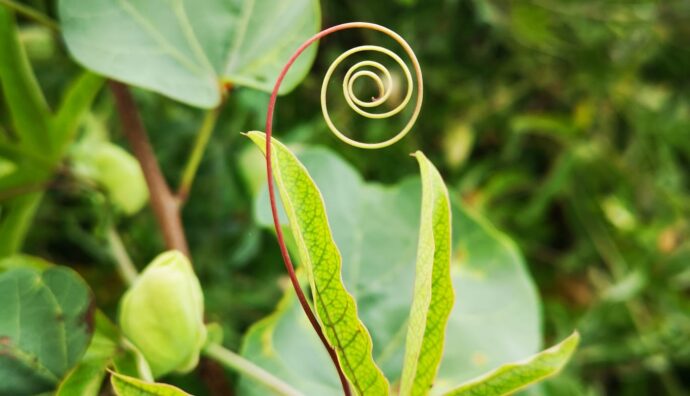Much has been written about the spiral, as a form widely spread in nature and as the foundation of movements in Martial Arts.
In our practice, we are all committed to achieve personal improvement, which starts from an improvement in the technical movement that is proposed to us and that, if we teach, we in turn point out to others.
Observing the movement of a professional athlete, a dancer, a highly skilled Martial Arts performer, is a bit like seeing the flight of swallows, the movement of the waves of the sea, the shape and color of a meadow and its flowers.
What strikes us is harmony. That innate sense of beauty that is written inside each of us from birth and that bounces in our chest when it mirrors itself in what our senses communicate to it.
Harmony is a delicate, constant, deep balance of lines and curves, edges and spirals.
Only in children’s drawings are trees very straight and objects and people have sharp edges but…
But reality tells us that we are fascinated by the orderly disorder of a tree, the perfect contortion of a bonsai, the charming detail of a building.
You cannot practice, nor live, always going along straight lines. Nor can one, due to a distorted understanding of what we call “peace“, practice – nor live – along circular trajectories. Avoiding, dodging, including cannot be constant. Nor can attacking or ignoring.
If we observe a climbing plant, like the one in the picture, we notice that its growth is entrusted to small, tender spirals. Expansion -or if we prefer: evolution– is entrusted to small involutions.
Once it has made contact with a solid hold, the spiral opens to anchor itself. The plant grows, the green stems that were previously spirals become more rigid woody segments and even, for some parts, straight.
From a didactic point of view, rotation and revolution movements around one’s own axis (tenkan and kaiten) allow the continuous discovery and perception of one’s own center. Contact, within a spiral movement, allows the generation of a more rectilinear (or better, polygonal) movement.
From nature, therefore, not only we learn what spirals are and how they work, but above all we understand what they are meant for. It is not just a matter of concentration or dispersion of energy.
It is, rather, knowing how to distinguish between an involutionary phase and an evolutionary phase.
Between the need to be able to better define a transitory center to consolidate the roots. It is knowing how to anchor oneself, coming into contact with infinite elements and knowing how to build a structure that, with the right mix of lines, angles, spirals, involutions, evolutions, constraints and freedom, makes our being harmonious.

